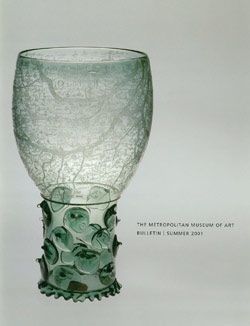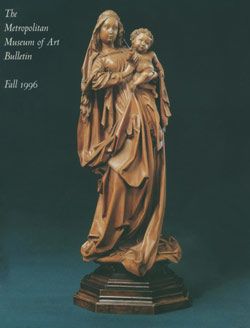Prophet from a Throne of Solomon
Not on view
Uncommonly refined and gemlike in its painterly finesse, this stained-glass fragment with a prophet is related stylistically to the work of André Beauneveu (1335–1401/3), a gifted sculptor, painter, and illuminator from the South Lowlands, who was employed by King Charles V of France; Louis de Mâle, comte de Flandres; Philippe le Hardi, duc de Bourgogne; and Jean, duc de Berry, among others. A close parallel to the figure style—particularly to the treatment of the hair and facial features—may be seen in the prophets depicted in the psalter of Jean, duc de Berry (Bibliothèque Nationale de France, ms. Français 13091), illuminated by Beauneveu about 1386 in either Paris or Bourges. A more striking comparison can be made to the limestone standing prophet wearing an apronlike mantle, probably executed by Beauneveu himself shortly after 1392 for the Sainte-Chapelle in the palace of Bourges. Although Beauneveu also designed stained glass for the Sainte-Chapelle, which was completed by 1408, it appears to have no direct connection to the present glass fragment, notwithstanding certain formal and stylistic analogies. The itinerant career of Beauneveu and his collaboration with other artists working for the same patrons make it difficult to localize the origins of the Cloisters' prophet.
The original context of the present figure is uncertain, but prophets in architectural settings were standard in several iconographic arrangements, such as that of the Throne of Solomon, as described in 3 Kings 10:18–20.
This image cannot be enlarged, viewed at full screen, or downloaded.




